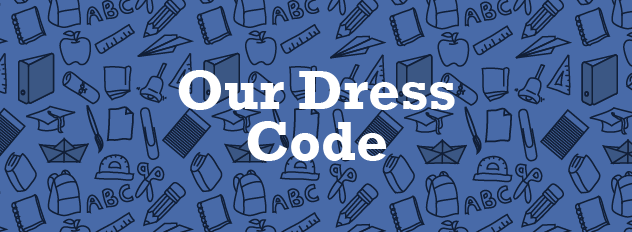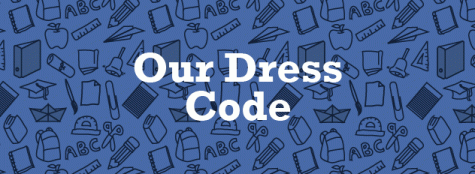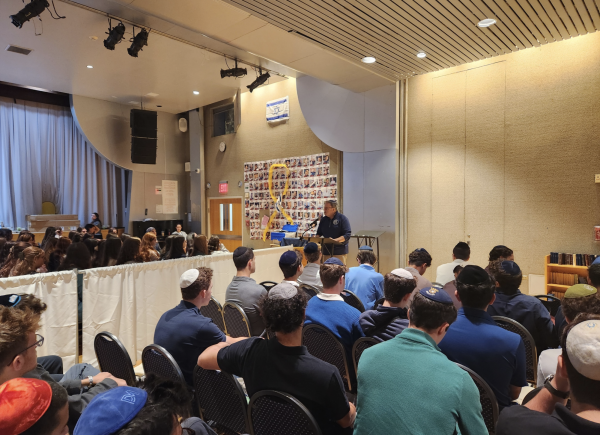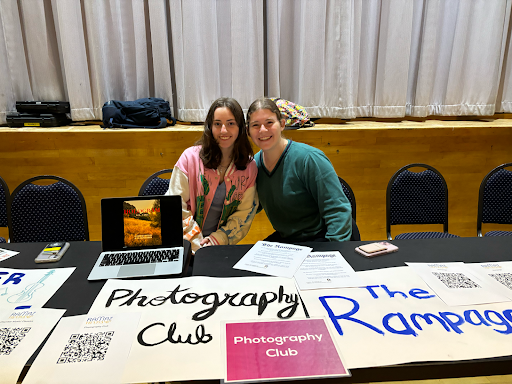Updated Dress Code
According to Preludes, three factors were considered in creating the Ramaz dress code. First, “the philosophical notion and halachic norms of tzniut, which we translate as ‘dignity.’” Second, much like a workplace, Ramaz wants to “foster an environment in which the learning process is treated with respect and dignity,” requiring the students’ clothes to reflect that goal. Third, the dress code must be clear enough to make enforcement fair and consistent.
When Rabbi Stochel sent out Preludes in late August, students noticed that this section of the handbook had been reorganized and rephrased, with a few new stipulations added. In terms of organizational changes, in the past, dress code regulations had been sorted into two distinct “Boys” and “Girls” sections. This year, the majority of the dress code section is dedicated to unisex rules, with gender-specific restrictions detailed at the bottom of the list. These rules remain the same: boys must wear kippot, tzitzit, button down shirts, and sweaters or ties between Sukkot and Pesach. Girls must wear skirts to the knee.
The changes to this year’s dress code focus on the element of formality discussed in the introduction, requiring students “to present a clean, neat and professional appearance.” These adjustments are presented in the unisex section of the dress code, but the new language disproportionately affects girls, whose original requirements were much less formal. Since boys were already wearing button-down shirts, the issue of words and images on clothing was more closely tied to girls’ tops.
According to the new 2018-2019 Preludes, “inappropriate casual attire includes, but is not limited to: t-shirts, sleeveless shirts, shirts that are low cut off of the shoulder, shirts with cap sleeves, jeans, sweatpants (including joggers), exercise pants, short pants, or short skirts…shirts with large writing, pictures, images, symbols or large logos of any kind…garments which expose the midriff and pajama pants worn under skirts.” Additionally, students cannot wear hats, flip-flops, or any clothing with mesh or cut-outs.
To view the updated preludes, click here
For girls, these changes mean that t-shirts and sweatshirts with writing or graphics on them, once ubiquitous around Ramaz, are now prohibited. Also forbidden is the skirt-over-pajama-pant look many students used as a more comfortable outfit option, and the leggings girls wear under their skirts can no longer have mesh stripes or cut-outs on the leg.
Upon reading the new restrictions, many girls assumed that they could no longer wear any short-sleeve shirts to school. This is not the case, Ms. Krupka clarified, saying that this year, “girls may definitely wear short sleeved shirts, but we are asking them to think about the distinction between ‘overly’ casual t-shirts and ones that are more appropriate for school.”
Overall, the new dress code adds limitations to girls’ clothing, but it also allows them more autonomy over deciding what clothing is appropriate for school. In the past, the dress code explicitly outlawed V-neck and scoop-neck shirts. This year, those limitations were replaced with a clause stipulating that “shirts that are low cut” are included in “inappropriate casual attire.” This requires girls to take ownership over appropriate outfit choice, more like a professional environment than a high school, in an attempt to prepare students for the real world, where no one will hand them a list of what is suitable to wear to a job interview. “Lines [in the dress code] that may sound more ambiguous are a push to create a conversation rather than saying ‘Here’s your list. Keep to the list, and if you don’t keep to the list you will be punished,’” said Ms. Krupka. “That’s not what the dress code is meant to be.”
Ultimately, the administration’s goal with the new changes is to create a dignified environment at Ramaz. According to Preludes, “Just as the workplace insists that employees dress in a particular way because of the effect that dress and action can have on an environment, so too should an educational environment. Our goal is to foster an environment in which the learning process is treated with respect and dignity, as the students and faculty themselves work towards treating one another that way.”
“We’re really going to push this idea of dress to feel beautiful, and empowered, and dignified,” said Ms. Krupka, “and I really want these discussions to start taking place in school in a variety of venues.
Girls’ reactions have been mixed. Many had already shopped for school clothes when Preludes was sent out, and now found that their outfits could be deemed “inappropriate.” “Almost all the clothes I own have words or pictures on them,” said James Auerbach ‘20, “and now on top of all my other preparations I have to deal with the stress of finding a ton of new clothes at a price that I can afford.”
Others found that while they appreciated the school’s motives, the changes would not achieve their desired goal. “While I understand where they’re coming from, I think that as students who work tirelessly throughout the school year, we should have the right to wear whatever clothing that makes us feel comfortable,” said Natalie Trump ’20.“I also think that a lot of students, especially upperclassmen, were frustrated by the new dress code because they already had a wardrobe of clothing that they liked to wear to school that they wouldn’t necessarily be allowed to wear after the dress code was changed.”
“As a Ramaz student who has been attending this institution my whole life and has experienced both a uniform in the lower school and a dress code in the middle school, I am able to see where the high school is coming from,” added Beth Kahn ’20.“All in all, I do believe that a dress code does provide a better learning environment and actually does contribute a lot to a student’s focus and concentration in class. However, I don’t believe that the new dress code rules issued in the preludes are necessarily logical or fair as prohibiting attire with ‘logos’ or ‘large writing’ does eliminate the majority of one’s everyday clothes.”
The administration’s goal is to “think first about what we want the school to look like – what does Ramaz look like with our perfect dress code? – and then work backward,” said Ms. Krupka, “When you walk down the halls, what does the school look like in our perfect vision? In your perfect vision as students? Let’s take the administration’s perfect vision and the students’ perfect vision, find the place that overlaps, and then think about what the dress code should be to meet that vision.”

Josephine Schizer has been writing for the Rampage since her freshman year and is excited to be serving as Co-Editor-in-Chief. Outside of Rampage, Josephine...




